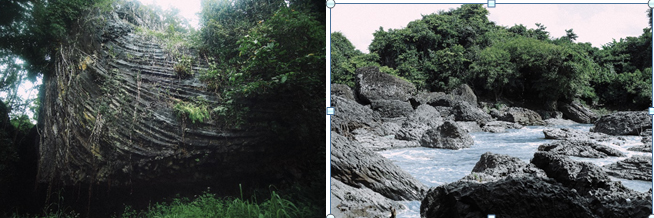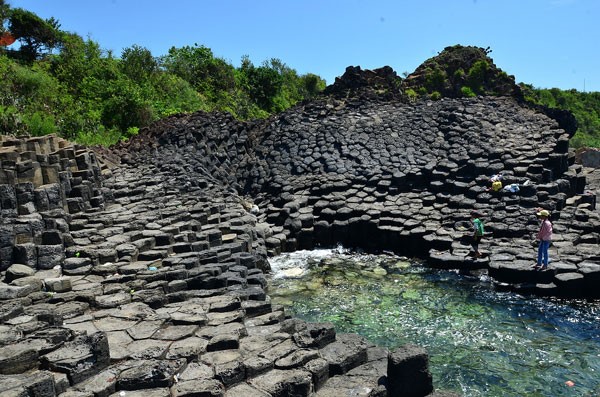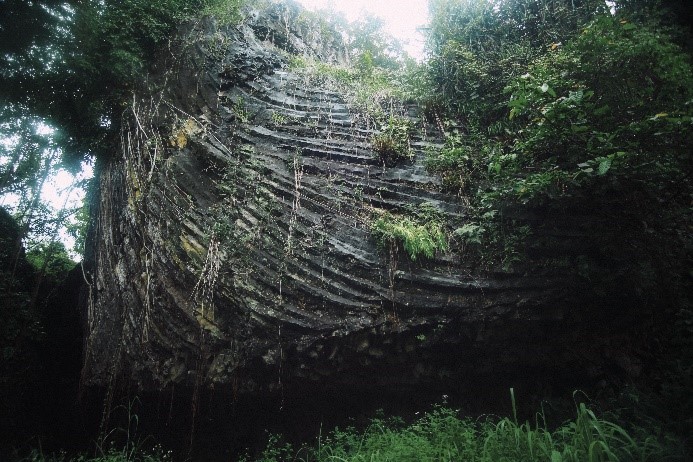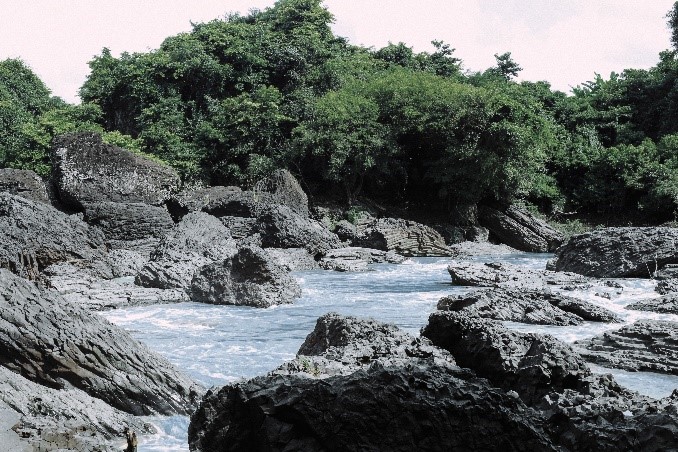
The Giant's Causeway of Ireland (United Kingdom) is well-known all over the world for its 40,000 interlocking basalt columns, resulting from an ancient volcanic fissure eruption from 50-60million years ago. It was declared a World Heritage Site by UNESCO in 1986.

Giants Causeway – Source: Internet
The rocks in Giants Causeway are basalt formed during volcanism process, lava erupting from volcanoes flowing close to the sea. When meeting the cool sea water, lava ejected from the crater hardened and cracked into vertical or oblique columns.
In Vietnam, there is also a beautiful columnar basalt with the same formation mechanism, named Da Dia Rapids (in Phu Yen Province).

Da Dia Rapids in Phu Yen Province – Source: Internet
Similarly blessed by the Nature, Dak Nong Geopark conserves a large column basalt reserves, forming from 5.3 to 0.78 million years ago. Interestingly, columnar basalt here is very diverse in shape and size, from polygonal pillars, hexagonal pillars to massive blocks with many exotic "rock veins" on surfaces.
Regarding the mechanism of columnar basalt formation, scientists believe that: When volcano eruption happened, melted lava flows (12000-14000C) poured on the surface of paleoterrain and accumulated in some hollow terrains. If cooling process, settling down and volume collapsing happen in close and homogenous condition, it would form basalt column.
Size of the column depends on lava composition and formation condition. Popularly, shape/section of column is usually of polygonal, pentagon and hexagon shape. Basalt column diameter ranged in tens to hundreds of centimeter or bigger. Basalt column length ranged in tens of centimeter to a few of meter. The more homogenous lava composition (low coating and extraneous matter) and more stable formation conditions, the bigger size of basalt column.
In Dak Nong Geopark, visitors have a chance to admire the outdoor "columnar basalt museum" in Bang Rup Rapids (formerly Trinh Nu Rapids).


Photo: Vo Anh Tu
It can be said that columnar basalt site is one of the most attractive destinations in Dak Nong Geopark where visitors can admire the grandeur and longevity of Mother Nature and be suprisingly acknowledged that these rocks are millions of years apart from us!
In near future, Dak Nong province is supposed to make a conservarion plan for these unique and priceless columnar basalt and turn them into natural outdoor "Rock Museums" to keep trace of our land's tectonic period for later generations.
Bach Van